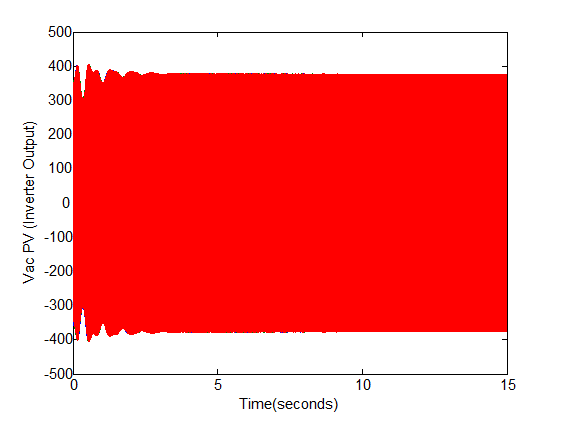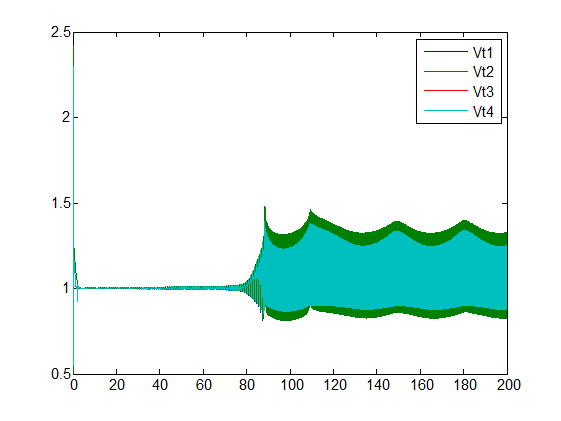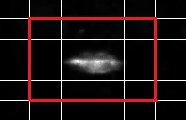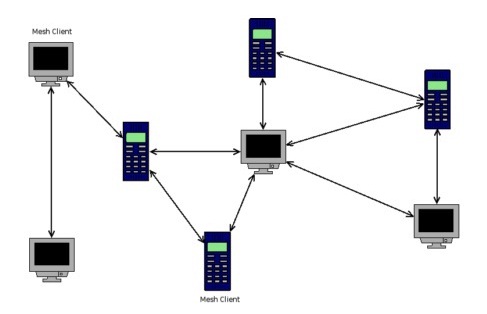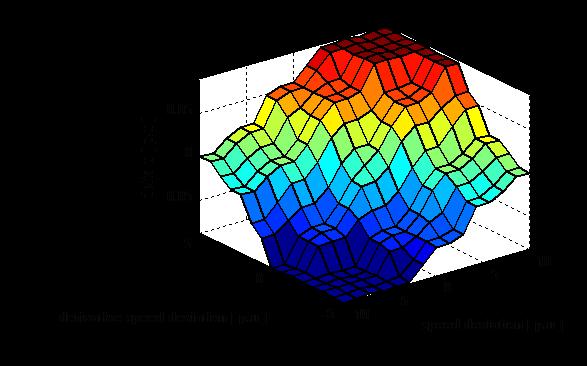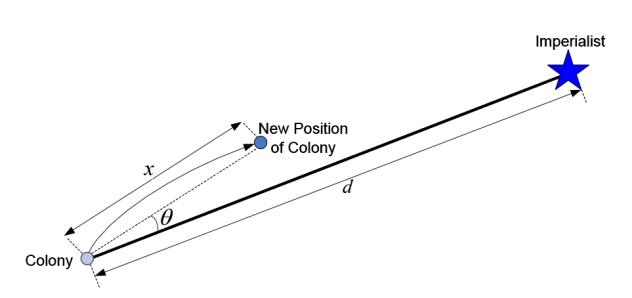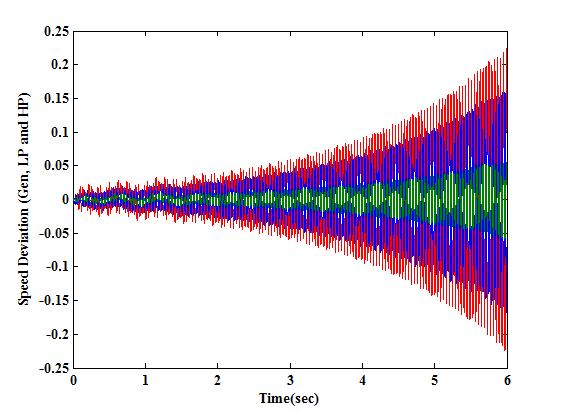Volume 1 (1); Dec 2012
|
Research Title Graphical Abstract |
Article Information/ |
Download |
|
PII: S232251141200001-1 Hybrid Energy Production System with PV Array and Wind Turbine and Pitch Angle Optimal Control by Genetic Algorithm (GA) |
Original Research, A1 Hosseini H., Farsadi M., Khalilpour M., Razmjooy N. J. World. Elect. Eng. Tech.,1(1): 01-04, 2012. ABSTRACT: In the 21st century because of expensive fossil fuels, usage of clean energy such as solar energy, wind energy, etc. will find more important. In this paper a hybrid energy production system with PV array and Wind turbine has been modeled. Wind and PV power plants are not sustainable like fuel energy production, thus this hybrid system must be connect to support power generator. In this paper Maximum Power Point Tracker (MPPT) has been used for operating PV in maximum power. This article focuses on modeling a photo voltaic connected to fixed speed wind turbine established on Synchronous Generator (SG) and support with distribution system. In order to optimal control of pitch angle at high speed of wind, genetic algorithm has been used. |
|
|
Optimum Design of PSS and SVC Controller for Damping Low Frequency Oscillation (LFO) |
Original Research, A2 Hosseini H., Tusi B., Razmjooy N., Khalilpour M. J. World. Elect. Eng. Tech.,1(1): 05-11, 2012. ABSTRACT: The development of the demand for electrical energy leads to loading the transmission system close to their limits that may lead to LFO happening. Low frequency oscillations (LFO) in power system happen usually because of lack of damping torque to overcome disturbances in power system such as changes in mechanical power. Due to the existence of the low frequency oscillation (LFO), the transmission power of AC lines is limited and the system angle stability is affected. In this paper the Parameters of the classic PSS and SVC internal AC and DC voltage controllers are designed in order to damp the Low Frequency Oscillations (LFO). The design of PSS and SVC parameters is considered as an optimization problem and Hybrid Particle Swarm Optimization (PSO) and Genetic Algorithm (GA) are used for searching optimized parameters. The results of the simulation show that the SVC with PID controllers is more effective in damping LFO compared to PSS with PID controllers. |
|
|
Hot paper An Efficient Algorithm for Lip Segmentation in Color Face Images Based on Local Information |
Original Research, A3 Kalbkhani H, Chehel Amirani. M. J. World. Elect. Eng. Tech.,1(1): 12-16, 2012. ABSTRACT: Lip detection is used in many applications such as face detection and lips reading. In previous works, researchers have considered whole of face image for lip detection. In this paper we propose a new algorithm. In our algorithm for reducing required calculation and increase accuracy of correct detection, we do not consider whole of the face image. We first remove the upper half part of the face image. Then, for estimate lip area, we divide remained lower half face image to equal parts. For each part we calculate statistical information such as standard deviation, and based on them we detect lip area in face image. For separate lip pixels from skin pixels, we use YCbCr and HSI color spaces at this work. We evaluate our work on CVL face database. Our experiments show that new algorithm gives better results than previous works on this database. |
|
|
PII: S232251141200004-1 Enhancement and Cleaning of Handwritten Data by using Neural Networks and Threshold Technical |
Original Research, A4 Zali Varghahan B and Chehel Amirani M. J. World. Elect. Eng. Tech.,1(1): 17-20., 2012. ABSTRACT: This paper propose the use threshold technical and artificial neural network (ANN) for clean and enhancement scanned image for recognition task. We show noise reduction and cleaning image can used different filter that result is not gratify. Multilayer perceptron (MLP) are trained in supervised methods using a cleaning image product with threshold technical and the corresponding noise handwritten image that product from scanning with scan machine. Results showed that this method is very performance from using filter for cleaning Image. Process of cleaning image is the preprocessing for system handwritten recognition that we do this work in this paper. |
|
|
PII: S232251141200005-1 |
Original Research, A5 Kalbkhani H and Zali. B. J. World. Elect. Eng. Tech.,1(1): 12-16, 2012. ABSTRACT: Wireless mesh networks (WMNs) have emerged as a key technology for next-generation wireless networking. Wireless mesh network is a self-organizing, self-managing and self-healing and thus it is easy and speedy in deployment. Apart from these characteristics, it is low cost and easy maintenance. However, WMNs pose several difficulties in transmission of information, especially time critical applications, such as streaming video. In this tutorial we provide focuses on WMNs and their prominence on ad-hoc networks, concepts of video and its transmission requirements, such as video coding and wireless channel specifications, with focuses on video surveillance systems. |
|
|
PII: S232251141200006-1 Novel Methods with Fuzzy Logic and ANFIS Controller Based SVC for Damping Sub-Synchronous Resonance and Low-Frequency Power Oscillation |
Original Research, A6 A Lak, Nazarpour D, Ghahramani H. J. World. Elect. Eng. Tech.,1(1): 27-34, 2012. ABSTRACT: A long transmission line needs controllable series as well as shunt compensation for power flow control and voltage regulation. In this paper, series fixed capacitive compensation and shunt compensation provided by a Static VAR Compensator (SVC) installed at the transmission line are considered. It is possible to damp Sub-Synchronous Resonance (SSR) caused by series capacitors with the help of an auxiliary SSR damping controller on SVC. In this work, two novel control methods for damping SSR is added to the SVC main control in order to demonstrate the SSR damping capability of SVC. The control methods are presented, namely: Fuzzy Logic Damping Controller (FLDC) and Adaptive Neuro-Fuzzy Inference System (ANFIS) controller. The ANFIS constructions were trained utilizing the generated database by the FLC of the SVC. The simulation results prove that ANFIS controller is found to be robust to fault type and change in operating situations. The Fast Fourier Transform (FFT) is carried out in order to evaluate the effect of TCSC based ANFIS controller in damping SSR and LFO. The study system was adopted from the IEEE Second Benchmark Model (ISBM) by installing the SVC. The MATLAB/Simulink software program was used to verify the effectiveness of each control method. |
|
|
PII: S232251141200007-1 Mitigating SSR in Hybrid Wind-Steam Turbine with TCSC Based Fuzzy Logic Controller and Adaptive Neuro Fuzzy Inference System Controller |
Original Research, A7 Hosseini H. and Tousi B. J. World. Elect. Eng. Tech.,1(1): 35-42, 2012. ABSTRACT: The increasing requirement to the clean and renewable energy has led to the rapid development of wind power systems all over the world. With growing usage wind power in power systems, impact of wind generators on subsynchronous resonance (SSR) is importance. SSR is a well-known phenomenon in a series compensated power systems which can be mitigated with Flexible ac transmission systems (FACTS) devices. In this paper for damping the SSR, a Thyristor Controlled Series Capacitor (TCSC) has been used. This paper used wind and steam turbine as a hybrid energy production system. In order to have an optimal control on pitch angle in high speed of wind, fuzzy logic damping controller (FLDC) and Adaptive Neuro Fuzzy Inference System (ANFIS) have been used. The main objective of this paper is to investigate the ability of the Thyristor Controlled Series Capacitor (TCSC) for mitigation of SSR. In order to conduct the studies, the IEEE second benchmark model on SSR is adapted with the combination of synchronous wind generator based wind turbine. Finally the operation of two controllers have been compard. |
|
|
PII: S232251141200008-1 A Novel Method for Designing PSS-AVR by Imperialist Competitive Algorithm (ICA) for three-area AGC System |
Original Research, A8 Hosseini H. and Tousi B. J. World. Elect. Eng. Tech.,1(1): 43-50, 2012. ABSTRACT: Abstract – Automatic Generation Control (AGC) is a very imperative issue in power system operation for providing electric power with high quality and reliability. In this paper, the three-area multi-units Automatic Generation Control (AGC) is studied. This paper presents the comparative performance analysis of the two specific varieties of controller devices for optimal transient performance of automatic generation control (AGC). Proportional Integral Derivative (PID) controller and Power System Stabilizer (PSS) with Automatic Voltage Regulator (AVR) have been designed for solving AGC problem. In this paper a new design method to determine optimal PID and PSS-AVR controller parameters by using imperialist competitive algorithm (ICA) has been proposed. Finally the results have been compared. |

